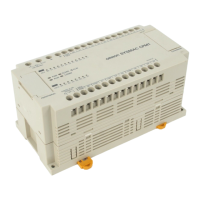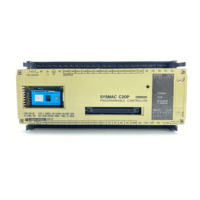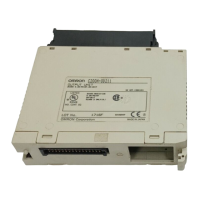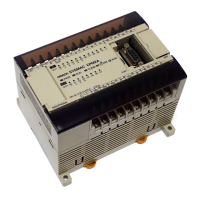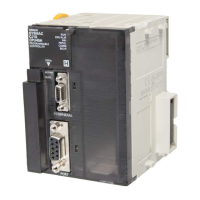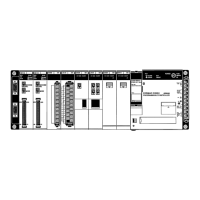!
156
Because in this example the SV for C0001 is 700, the Completion Flag for C0002
turns ON when 1 second x 700 times, or 11 minutes and 40 seconds, have ex-
pired. This would result in 000202 being turned ON.
Address Instruction
00000 LD 000000
00001 AND A50102
00002 LD NOT 000001
00003 CNT 0001
#0700
00004 LD C00001
00005 OUT 000202
Operands
0000
00
0000
01
C000
01
0002
02
A501
02
CNT 0001 #0700
CP
R
Caution The shorter clock pulses will not necessarily produce accurate timers because
their short ON times might not be read accurately during longer cycles. In partic-
ular, the 0.02-second and 0.1-second clock pulses should not be used to create
timers.
5-13-7 REVERSIBLE COUNTER: CNTR(012)
(012)
CNTR N S
S: Set value CIO, G, A, T, C, #, DM, DR, IR
*Refer to page 141 for details on indirectly addressing
counters.
N: Counter number #
Operand Data AreasLadder Symbol
II
DI
R
Description The CNTR(012) is a reversible, up/down circular counter, i.e., it is used to count
between zero and SV according to changes in two execution conditions, those
on the increment input (II) and those in the decrement input (DI).
The present value (PV) will be incremented by one whenever CNTR(012) is
executed with an ON execution condition for II and the last execution condition
for II was OFF. The present value (PV) will be decremented by one whenever
CNTR(012) is executed with an ON execution condition for DI and the last
execution condition for DI was OFF. If OFF to ON changes have occurred in both
II and DI since the last execution, the PV will not be changed.
If the execution conditions have not changed or have changed from ON to OFF
for both II and DI, the PV of CNTR(012) will not be changed.
When decremented below 0000, the present value is set to SV and the Comple-
tion Flag is turned ON until the PV is decremented again. When incremented
above SV, the PV is set to 0000 and the Completion Flag is turned ON until the
PV is incremented again.
CNTR(012) is reset with a reset input, R. When R goes from OFF to ON, the PV
is reset to zero. The PV will not be incremented or decremented while R is ON.
Counting will begin again when R goes OFF. The PV for CNTR(012) will not be
reset in interlocked program sections or by power interruptions.
Timer and Counter Instructions Section 5-13
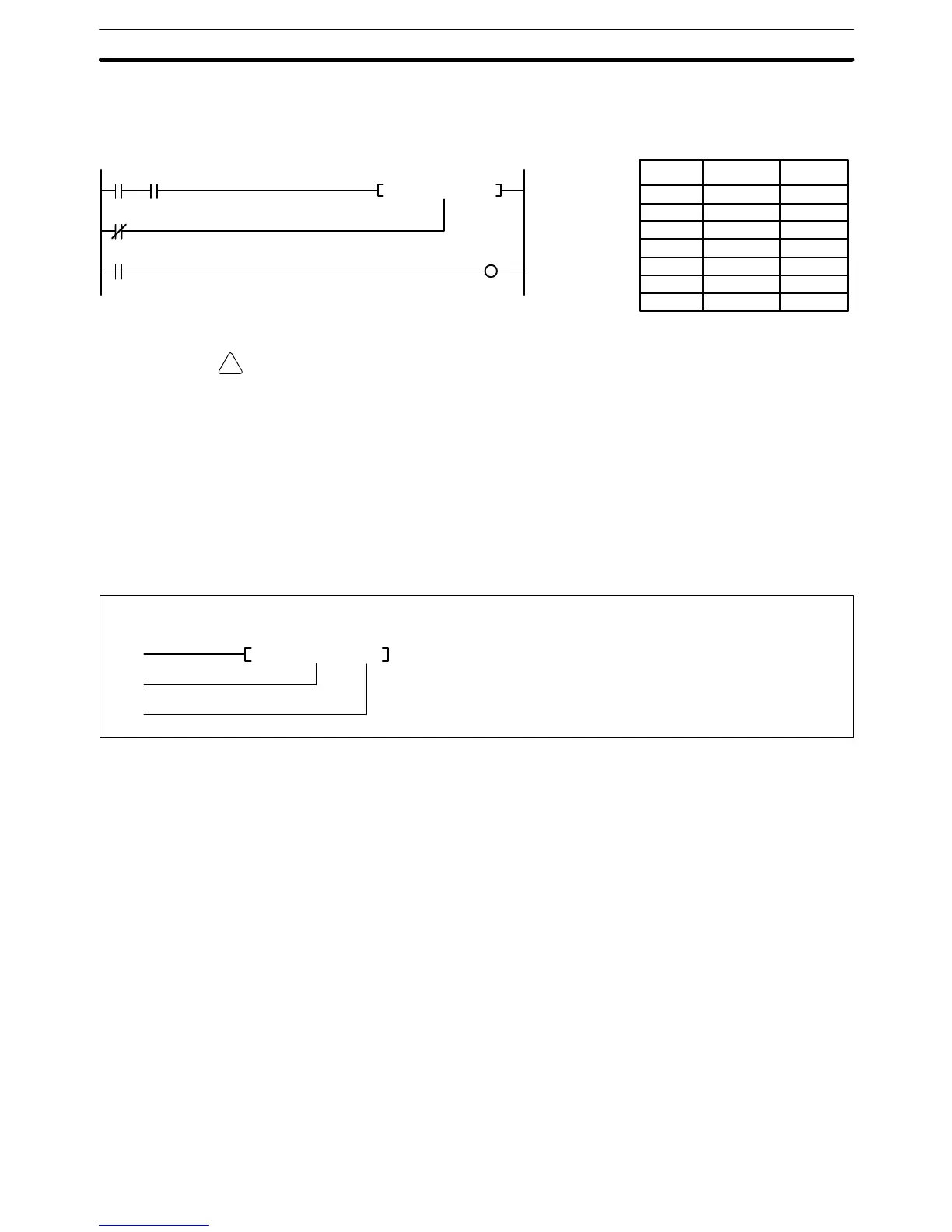